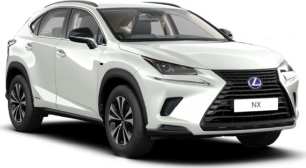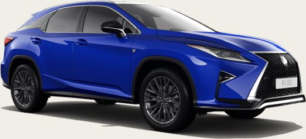Though the Lexus NX might look sporty and dynamic from the outside, don’t be mistaken into thinking Lexus’ mid-size SUV is anything other than a comfy cruiser.
Steering remains light and lifeless in its default ‘Nomal’ drive mode, but even in ‘Sport S’ and ‘Sport S+’, weighting feels artificial and numb.
What this means is that the NX 300h F Sport is a joy to manoeuvre around town at low speeds, but is found lacking when the speedo climbs and the roads get a bit twisty.
Likewise, a stab of the throttle is met with a spike in revs and engine noise as the powertrain switches from its electric motor to internal combustion engine, but the expected thrust-burst never comes.
CVTs are generally tuned for better fuel economy, not a sporting drive, so it makes sense that the NX is a little more hesitant and lethargic to get up to speed, but the transmission does suffer from that ‘elastic’ feel where it can be slow to ‘shift up’ if it thinks you are wanting a sporty drive.
However, these shortcomings are especially evident when stacking it up next to the new Toyota RAV4 hybrid.
The NX is underpinned by Toyota’s MC platform, shared with the old RAV4, whereas the fifth-generation mid-size SUV that launched in 2019 is updated with a TNGA platform.
Much of our aforementioned criticisms in driving dynamics and snoozy drivetrain are fixed, or at least alleviated, in the latest Toyota RAV4, so here’s hoping the next-gen NX rumoured to break cover soon will be a welcomed step forward.
And while the current Lexus NX is certainly not the last world in SUV driving dynamics, it’s not trying to be.
As a daily runabout for the family, the NX is comfortable and predictable – just what some families might be after.
The suspension does a great job at soaking up road imperfections and little bumps you might find on your journey, helped by the comfy seats and great interior sound insulation.
What is noticeable though, is overcoming large bumps or any change in elevation at speed, where the NX 300h’s hefty weight means it takes just a touch longer to get settled again.
The cabin also feels a bit fussy from the driver’s seat, with the multimedia especially being fiddly and hard to navigate when on the move.
We reckon a rotary controller like those found on a BMW, or even better multimedia software as seen with a Benz, could go a long way in fixing Lexus’ multimedia woes.
Having said that, the system is compatible with Android Auto, and is laid out well on the widescreen, so you could easily forgo the annoying touchpad and janky software for a better experience.

